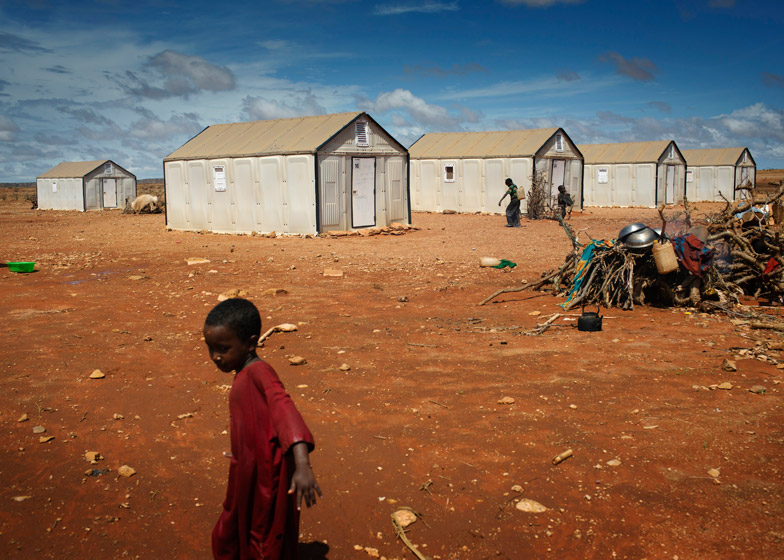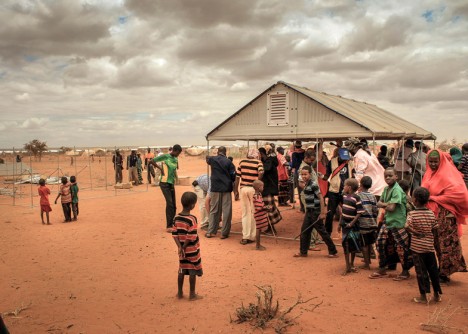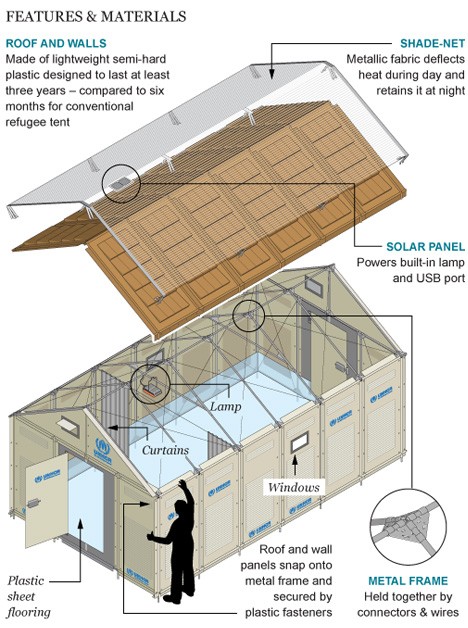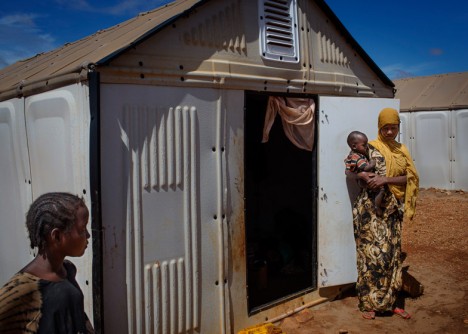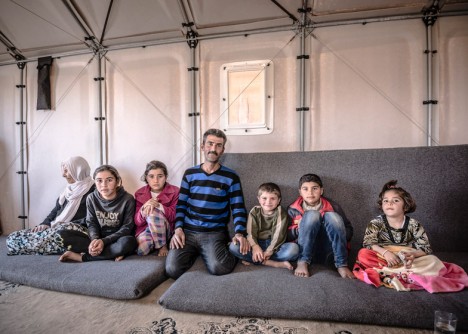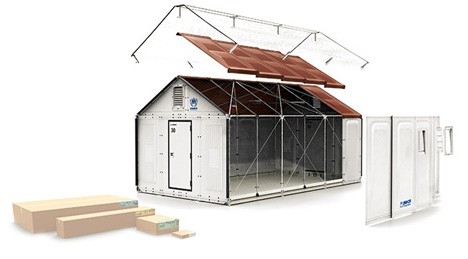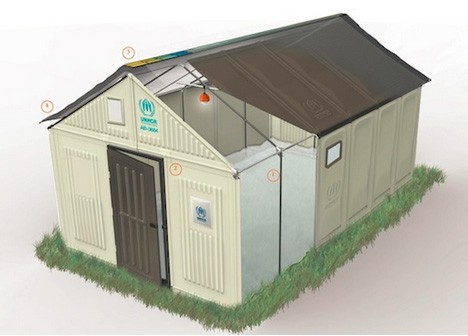With 40 test units created and deployed since 2013, IKEA is now ready to begin mass-producing its $1,000-per-unit temporary flat-pack house to destinations in need around the world. Much like IKEA‘s everyday products, these shelters are ready to use right out of the box – some assembly required but all needed tools included along with language-independent visual instructions.
IKEA recognized the need for more robust shelters in refugee camps and disaster areas, where temporary housing often has to hold up to severe weather and longer-than-expected durations.
The foundation developed Better Shelter as a low-cost alternative to conventional equivalents, and made to evolve over time, being adaptable by its occupants who may spend years in between more permanent homes. Earthen walls and corrugated metal roofs can be pushed up against, fastened to and ultimately help reinforce the core buildings, in some cases eventually replacing the need for underlying framework entirely.
At close to 200 square feet per unit, these are perhaps not spacious but some standards but are much larger than most emergency housing solutions, and they are meant to be augmented by exterior space and other customizations and additions.
Panels, pipes, connectors, wires as well as solar power panels for the roof are all packed flat in boxes for easy shipping. While standardized, the modules are also designed to be adapted to regional climate conditions.
Supplied to the United Nations Refugee Agency (UNHCR) by the Ikea Foundation, these new units will find homes in places they are currently used (like Ethiopia and Iraq) as well as other destinations.
Shaun Scales, UNHCR’s chief of shelter and settlement, said in a press statement: “The refugee housing unit (RHU) is an exciting new development in humanitarian shelter and represents a much needed addition to the palette of sheltering options mobilised to assist those in need. Its deployment will ensure dramatic improvement to the lives of many people affected by crises.”
